- Reaction score
- 23,757
- Points
- 1,260
Clearly the answer is Nuclear power…Interesting. That was my wonder really. Will the limitation be the ships ability to generate the power needed for sustained contact.

Clearly the answer is Nuclear power…Interesting. That was my wonder really. Will the limitation be the ships ability to generate the power needed for sustained contact.
Really more about the short term power demands and things like cooling, not the actual power generation.Clearly the answer is Nuclear power…
The US Army is integrating a 20 kW-class laser weapon system into its new Infantry Squad Vehicle (ISV) to help soldiers down smaller unmanned aerial systems (UASs), according to the director of the service's Rapid Capabilities and Critical Technologies Office Lieutenant General Neil Thurgood.
The Directed Energy Maneuver Short Range Air Defense (DE M-SHORAD) system is a 50-kilowatt laser weapon mounted on a Stryker infantry carrier vehicle. Instead of a Stinger missile, think of a high powered beam of energy directed at a target.
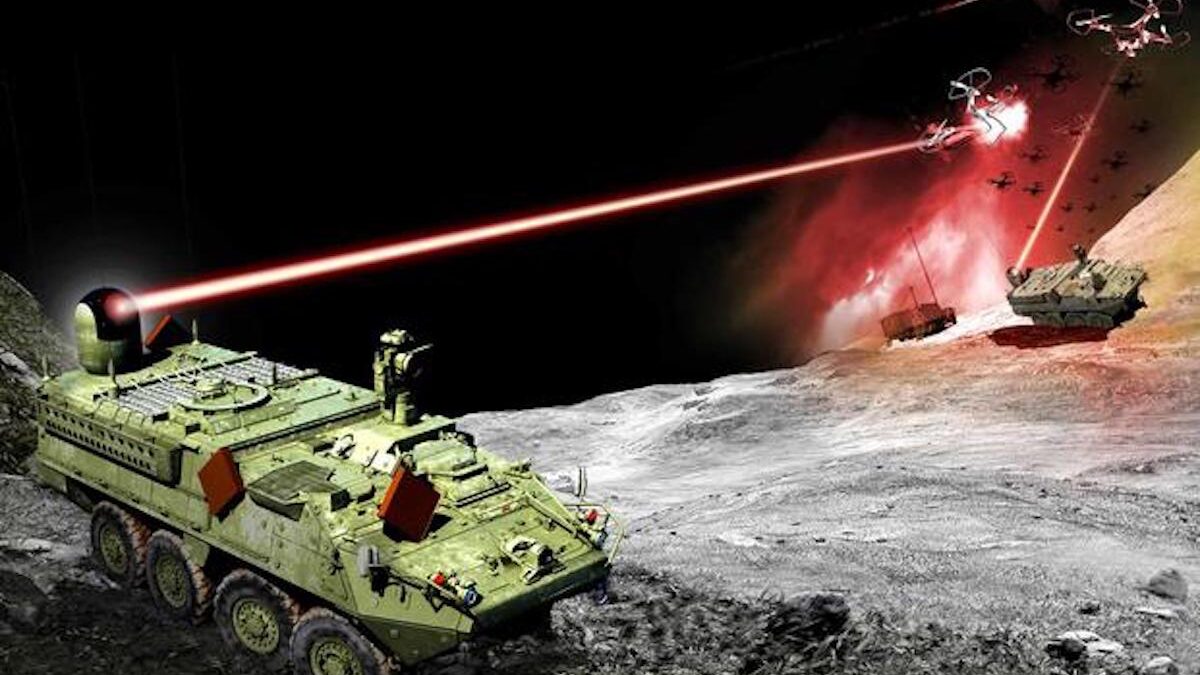
There was exciting news for the US Navy last week as it was announced that Lockheed Martin finally delivered the 60+ kW-class high-energy laser with integrated optical-dazzler and surveillance (HELIOS), the first tactical laser weapon system to be integrated into existing ships. The weapon is also capable of providing directed energy capability to the fleet.

Giant US defense contractor Lockheed Martin says it has delivered a 300 kW electrically driven laser - the most powerful it has ever produced - for weapons demonstration efforts by the US Army.
Lasers seem to be in the same power band as typical industrial motors - 20 to 300 kW.
US Army outfitting Infantry Squad Vehicle with 20 kW laser, DE M-SHORAD deliveries forthcoming
The US Army is integrating a 20 kW-class laser weapon system into its new Infantry Squad Vehicle (ISV) to help soldiers down smaller unmanned aerial systems (UASs),...www.janes.com

The Army is putting lasers on Strykers powerful enough to shoot down drones and helicopters
The "L" in "Lethality" stands for "Lasers"taskandpurpose.com

It’s finally here: Lockheed Martin delivers 60+ kW laser to the US Navy
A total game-changer.interestingengineering.com
Lockheed Martin delivers 300kW laser to US military
Arms firm says that record-breaking laser weapon is ready to be integrated with US Department of Defense demonstrations.optics.org
Harry De Wolfs have four 3600 kW generators. 25% of that power, 1 generator, would power 12 of the highest energy lasers currently available.

It's not the power, it's the instantaneous demand requirement and cycle time, which is why they use batteries/capacitors that need recharged. 30 kW delivered in a fraction of a second is completely different than over a few minutes.Harry De Wolfs have four 3600 kW generators. 25% of that power, 1 generator, would power 12 of the highest energy lasers currently available.
Also, there's a limited window of utility for lasers. Once countries start making the exterior of their missiles and UAVs out of mirrors, the gig is up!
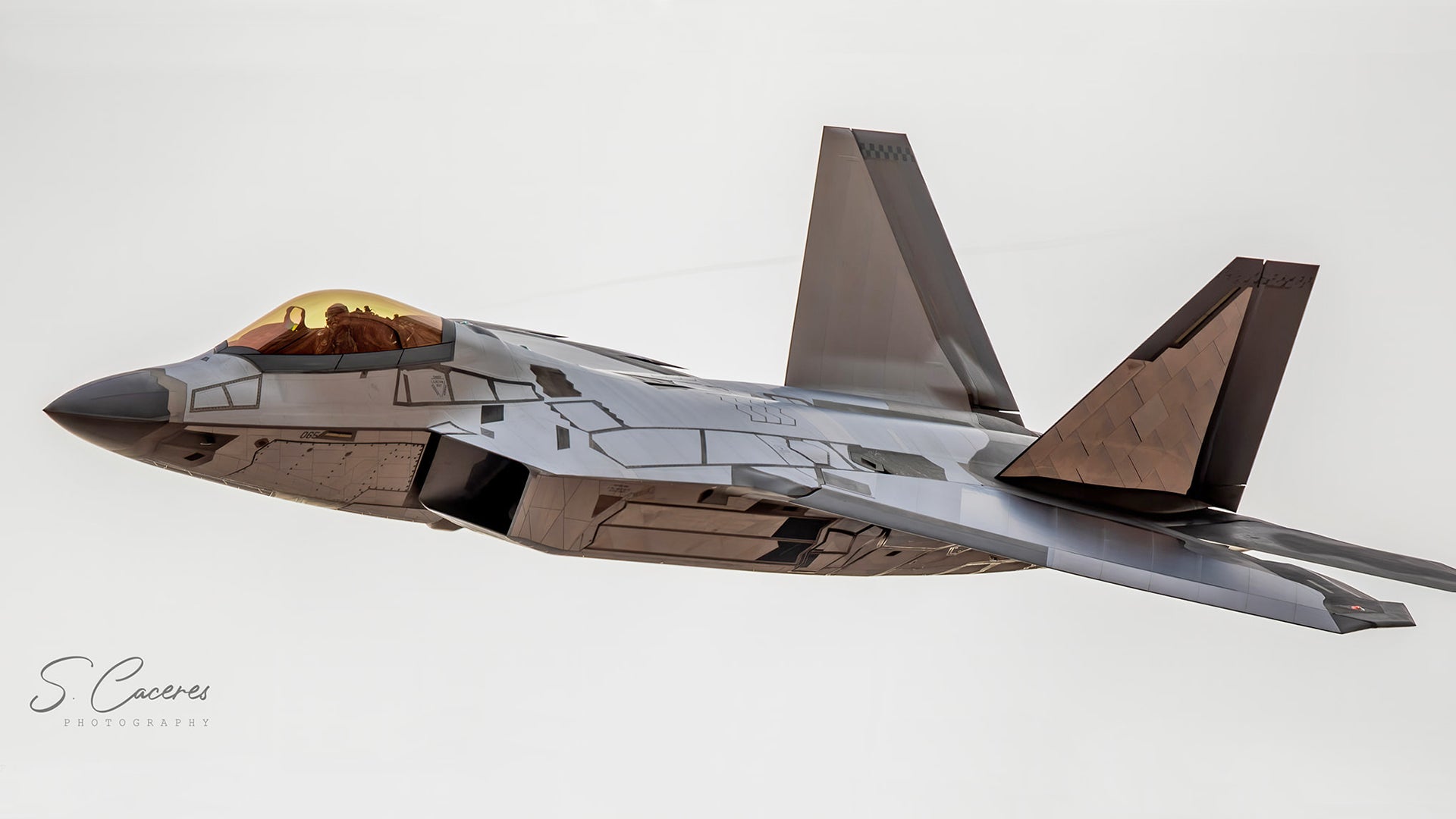
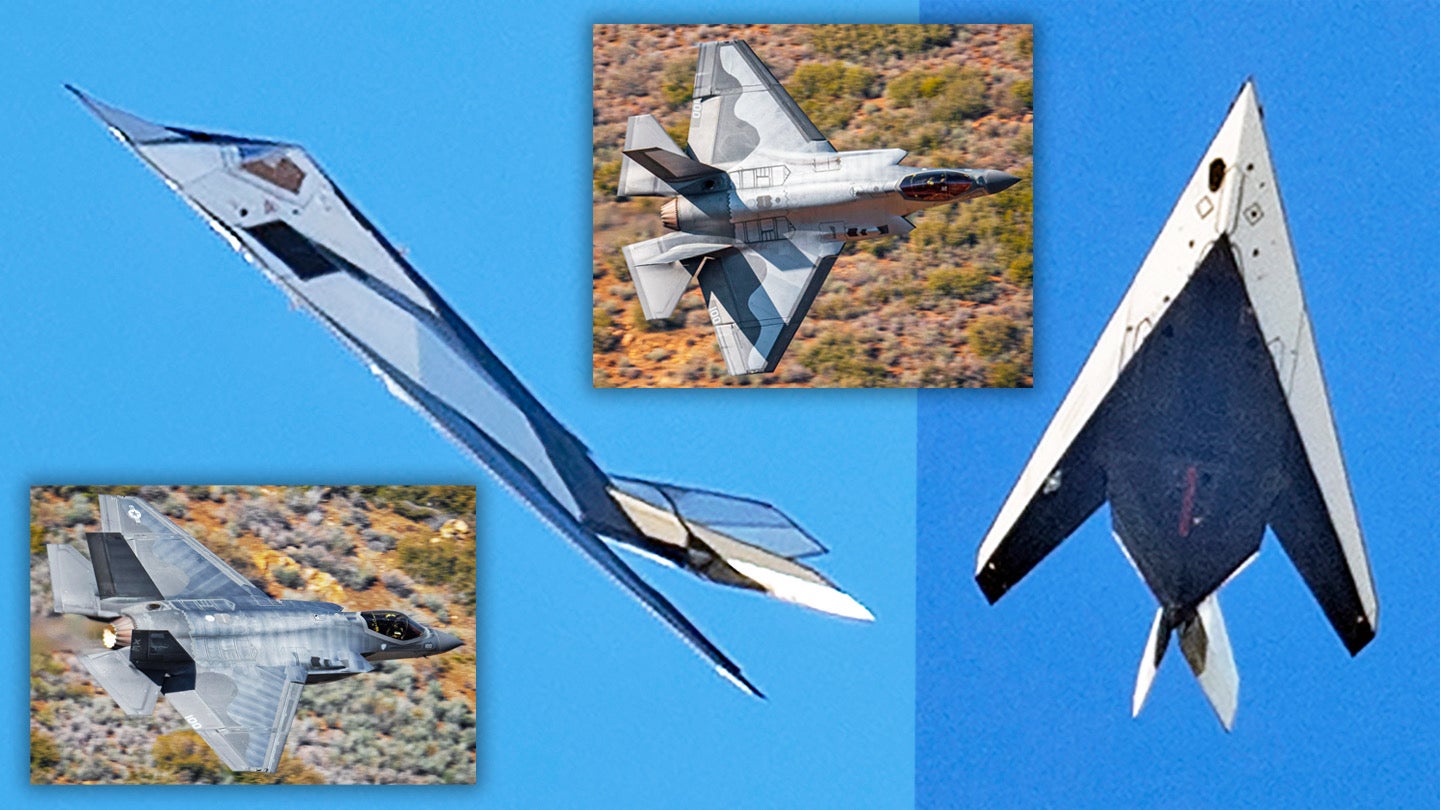
polished aluminium for the win?Also, there's a limited window of utility for lasers. Once countries start making the exterior of their missiles and UAVs out of mirrors, the gig is up!
polished aluminium for the win?
So we should tell the enemy not to polish their aircraft as it's unfair to our laser and then whack them with a proximity round.Might make EO/IR tracking a bit easier for the conventional weapons.
Not just that, ceramic coatings would degrade the heating properties of lasers significantly. Tiles from the space shuttle for would essentially make a target invlunerable to laser damage in that area. Engineering challenges there for sure though. You'd have to keep sensors free from ceramics (which can block EM quite well), and being tough but brittle their material properties are not ideal for aircraft.Also, there's a limited window of utility for lasers. Once countries start making the exterior of their missiles and UAVs out of mirrors, the gig is up!
It's not the power, it's the instantaneous demand requirement and cycle time, which is why they use batteries/capacitors that need recharged. 30 kW delivered in a fraction of a second is completely different than over a few minutes.
You can have the same amount of energy in a bucket of fuel and some explosives, but they each have different applications. Same idea here.
That is a bit of myth and does not actually work against a weapons grade laser.polished aluminium for the win?
ShhhThat is a bit of myth and does not actually work against a weapons grade laser.
even the most elegant idea or design is a hypothesis. It remains a hypothesis until reduced to engineering, subjected to rigorous field trials, and vindicated—or not—in the real world. It may suffice once amended to meet the test of reality. Or it may not. Failure is always an option.
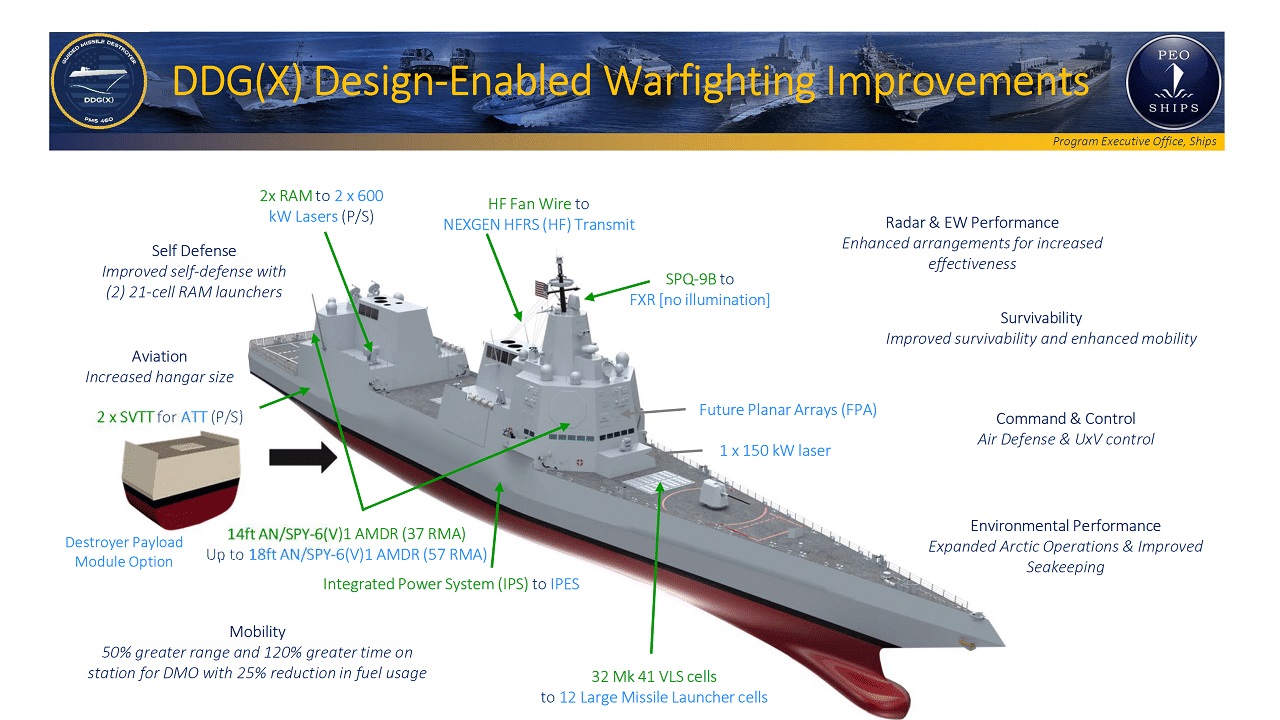
Suddenly, CSC doesn’t look so expensive, does it?Another eternal truth.

The Navy's DDG(X) Destroyer: We Have a Price Problem
The DDG(X) program could for sure be a great success. But with costs coming in way over what was promised, we should be worried.www.19fortyfive.com
Suddenly, CSC doesn’t look so expensive, does it?
The Danish answer: their $340 million, 6,600-ton Iver Huitfeldt “Stanflex” frigate.
That’s a lot of ship for the price. But a leading US expert, Bryan Clark, tells us that the Danes may be undercounting their costs by about $50 million, since some of the frigates’ weaponry was recycled from older ships going out of service — an economy made possible by the Danish navy’s Stanflex system of interchangeable equipment modules. That would put the frigate at under $400 million, which is still pretty good compared to LCS or international competitors. The thing is, Clark argued, the costs to the US would be much higher once the design was upgraded to US Navy standards, fitted with US weapons and electronics, and built in less efficient US yards.
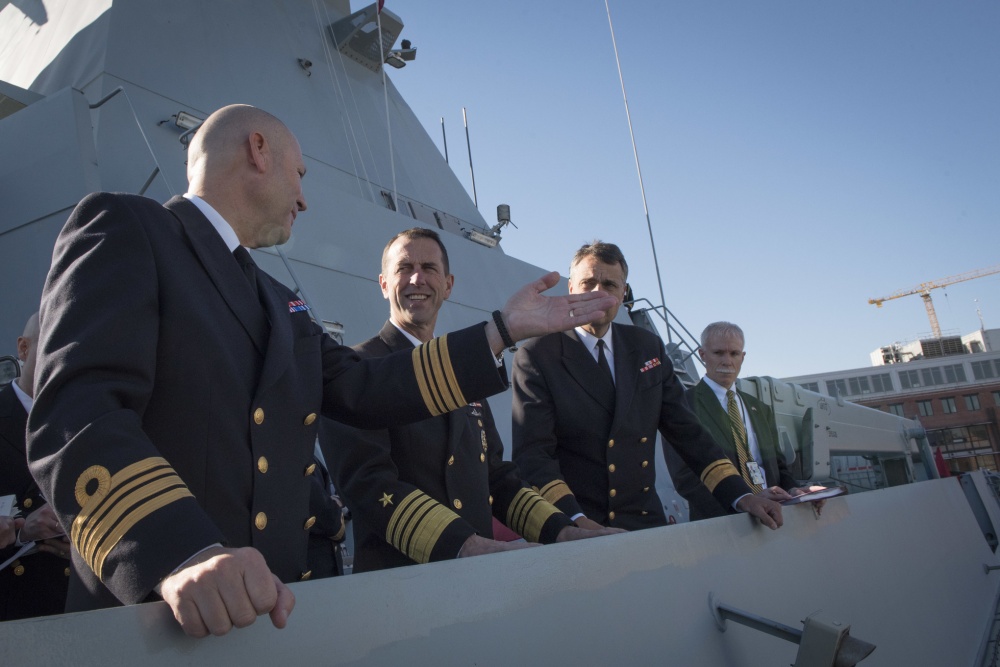
60 billion for the entire project from 2017 to 2042. The Type 26 was designed as a warship, while the Iver Huitfeld was not. Tons of compartments take alone takes a lot of time and money to build.Still wish we had Danish project managers and bookkeepers.

Danes Tout $340M Stanflex Frigate For US Navy - But What's Real Cost? - Breaking Defense
WASHINGTON: Denmark really wants you to know they have a solution for the US Navy’s frigate problem. Pentagon officials are on the record that they’ll consider foreign designs in their quest for a more powerful small warship than the $450–$550 million, 3,400-ton Littoral Combat Ship. The Danish...breakingdefense.com
Construction began in September on HMS Venturer, the inaugural vessel for the Royal Navy. The five (Type 31 - Arrowhead 140 - Iver Huitfeldt) ships Britain has ordered will cost £1.25bn, (1.95 BCAD) meaning they cost about a quarter as much as the more sophisticated type 45 Destroyer.
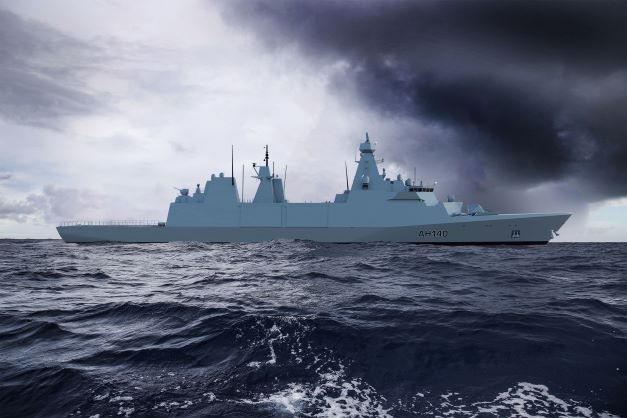
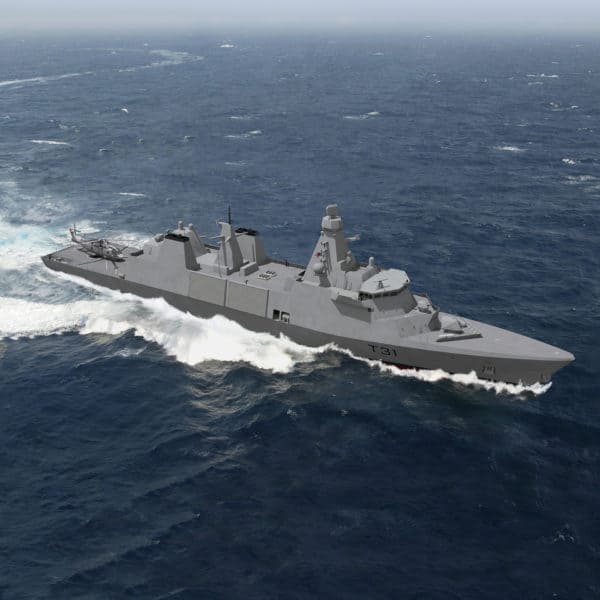

FTSE 250 company Babock will provide Poland with three frigates based on the Royal Navy’s Type 31 design.
Babcock beat a rival bid from Germany's Thyssenkrupp to lead the £1.4bn (2.19 BCAD) contract. The win will come as a relief for Babcock after it lost out on a three-ship contract with Greece to France’s Naval Group.
The ships will be built in Nato member Poland’s shipyards with Babcock’s design and will feature combat equipment from Thales and anti-aircraft firepower from missile maker MBDA, which is part-owned by Britain’s BAE Systems.
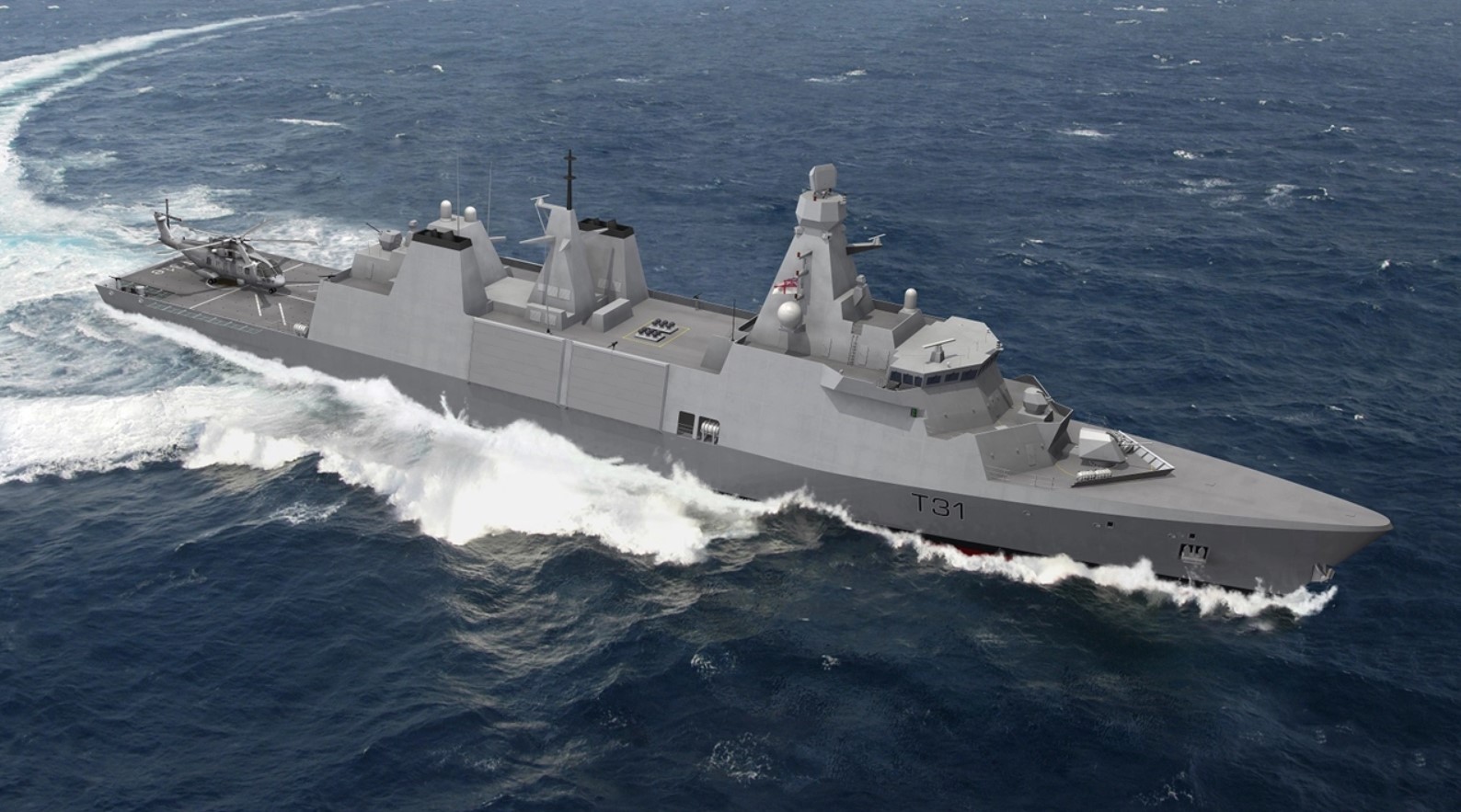

 www.globaldefensecorp.com
www.globaldefensecorp.com
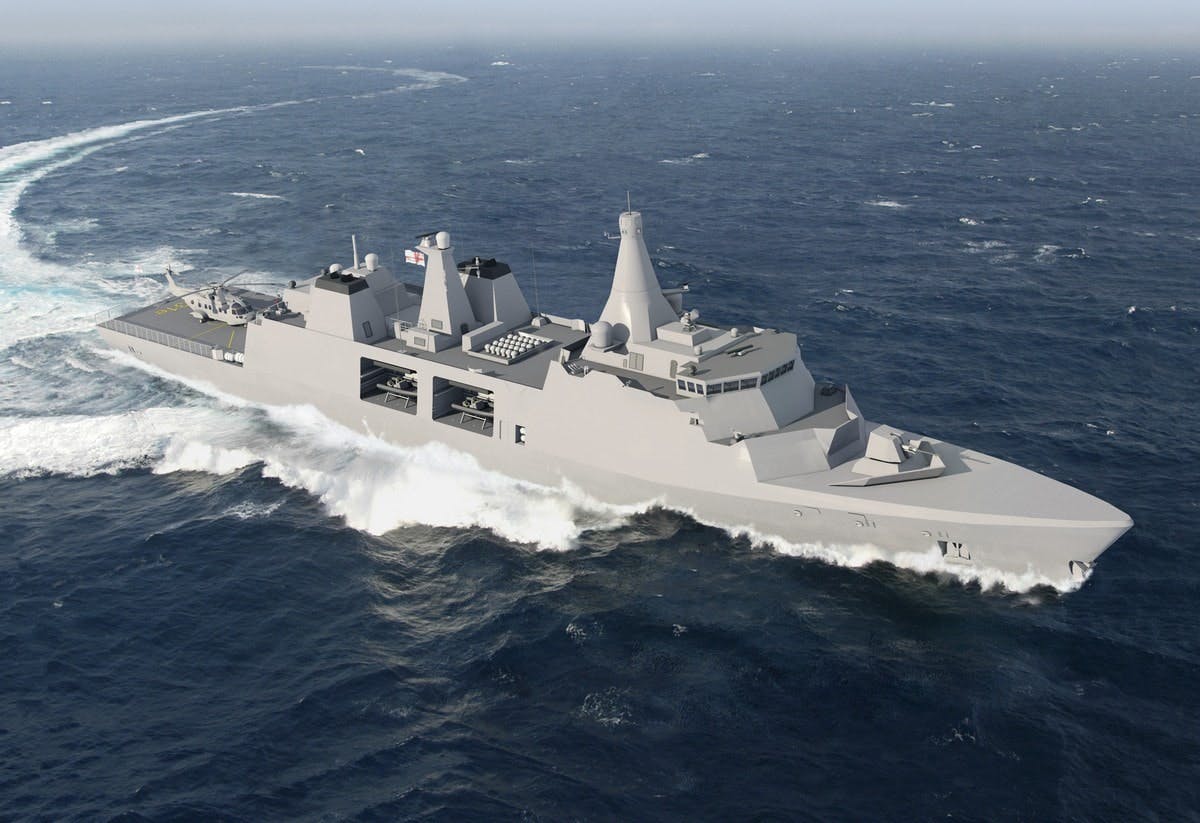
 ukdefencejournal.org.uk
ukdefencejournal.org.uk
A Type 31 or Inspiration-class frigate is a general-purpose, light frigate developed by Team 31, led by Babcock International as a prime contractor. The design of the Type 31 vessel is based on Odense Maritime Technology’s (OMT) Iver Huitfeldt-class hull form, which is currently in service with the Royal Danish Navy.
The Royal Navy is buying five similar Type 31 frigates, but Babcock says the baseline Arrowhead 140 design can be configured to meet a broad range of operational requirements specifically tailored for Indonesian operations.
The $720 million deal is a triumph for Jakarta as it looks to benefit from a transfer of technology, not only to build its own military hardware in the future, but to contribute to the economic benefits of developing the country’s shipbuilding industry.
The comment about "less efficient US yards" is a bit surprising.Still wish we had Danish project managers and bookkeepers.

Danes Tout $340M Stanflex Frigate For US Navy - But What's Real Cost? - Breaking Defense
WASHINGTON: Denmark really wants you to know they have a solution for the US Navy’s frigate problem. Pentagon officials are on the record that they’ll consider foreign designs in their quest for a more powerful small warship than the $450–$550 million, 3,400-ton Littoral Combat Ship. The Danish...breakingdefense.com
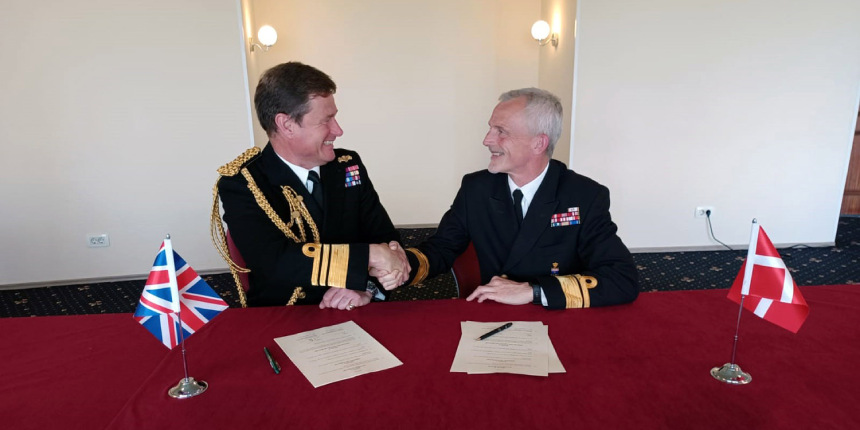

According to the information revealed by the conference attendants, the Miecznik frigates will be 138.7 meters long, 19.7 meters wide, and 5.5 meters deep, with a displacement of about 7000 tonnes. The frigates will be able to operate at sea for 30 days without replenishment. The maximum speed will be 28 knots, and the range at 18 knots will be more than 6,000 nautical miles. The crew of the ships will be about 100-120 people, but the frigates will be able to accommodate up to 160 people.
The frigate’s armament appears to be in line with expectations. 4 quad SSM launchers with RBS-15 mk3/mk4 are mounted at various points on the ship. The Arrowhead140PL is equipped with a 32-cell VLS, and according to a March 4 announcement, MBDA will equip the Sea Ceptor air defence system with CAMM family missiles. Considering that one cell can hold four CAMM missiles, the maximum load of the VLS will be 128 CAMM missiles. The illustration also indicates that the new frigates will be armed with a 76-mm gun and a 35- mm gun. The ship will be capable of carrying and launching MU -90 torpedoes against submarine threats.
There is not much information about the sensor suit, but the image shows that the Miecznik frigate will be equipped with an SM-400 AESA S-band radar supported by an NS -50 rotating radar. The conferees indicate that CAPTAS variable depth sonar and a hull-mounted sonar will be equipped for ASW purposes.
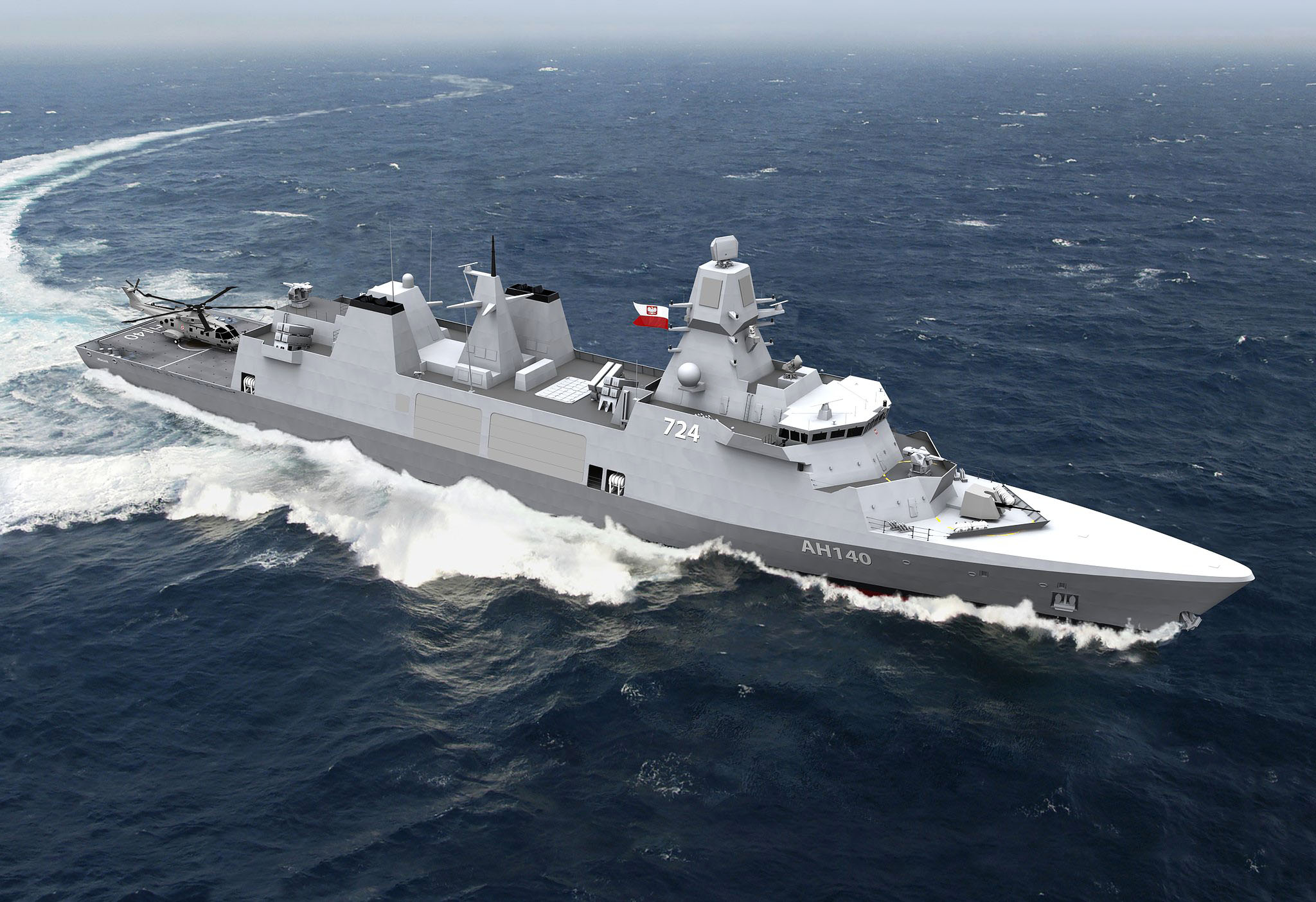
| General characteristics | |
|---|---|
| Name | Type 31 frigate |
| Builders | Babcock International[5] |
| Operators | |
| Preceded by | Type 23 frigate |
| Cost | £268 million (2019)[1] per unit (est.) |
| In service | 2027[2][3] |
| Planned |
|
| Building | 1 |
| Completed | 0 |
| Type | General purpose frigate |
| Displacement | 5,700 t (5,600 long tons) |
| Length | 138.7 m (455 ft 1 in) |
| Installed power |
|
| Propulsion | |
| Speed | In excess of 28 knots (52 km/h; 32 mph) |
| Endurance | 9,000 nmi (17,000 km; 10,000 mi) |
| Complement | 80–100 (accommodation for up to 160) |
| Sensors and processing systems |
|
| Electronic warfare & decoys | Vigile-D ESM |
| Armament |
|
| Aircraft carried | |
| Aviation facilities | Helicopter hangar and flight deck |
| Notes |
| General characteristics | |
|---|---|
| Class overview | |
| Builders |
|
| Operators | 
|
| Preceded by | Niels Juel-class corvette[3] |
| Subclasses | Type 31 frigate |
| Cost | US$325 million per ship[1][2] |
| Built | 2008–2011 |
| In commission | 2012–present |
| Planned | 3 |
| Completed | 3 |
| Type | Air defence frigate |
| Displacement | 6,645 t (6,540 long tons) (full load) |
| Length | 138.7 m (455 ft 1 in) |
| Beam | 19.75 m (64 ft 10 in) |
| Draft | 5.3 m (17 ft 5 in) |
| Propulsion |
|
| Speed | 30 knots (56 km/h; 35 mph) |
| Range | 9,000 nmi (17,000 km; 10,000 mi) at 18 knots (33 km/h; 21 mph)[6] |
| Complement | 165 |
| Sensors and processing systems |
|
| Electronic warfare & decoys |
|
| Armament |
|
| Aircraft carried | 1 × MH-60R |
| Aviation facilities | Aft helicopter deck and hangar |
| General characteristics | |
|---|---|
| Class overview | |
| Builders | Odense Staalskibsværft |
| Operators | Royal Danish Navy |
| Preceded by | Falster class minelayer |
| Cost | DKK2.5bn (total),[1] (~US$189m/ship) excluding weapon modules |
| Built | 2003–2004 |
| In commission | 2005–present |
| Completed | 2 |
| Active | 2 |
| Type | Frigates (formerly support ships) |
| Displacement | |
| Length | 137 m (449 ft 6 in)[1] |
| Beam | 19.5 m (64 ft 0 in)[1] |
| Draft | 6.3 m (20 ft 8 in)[1] |
| Propulsion | |
| Speed | 24 knots (44 km/h)[1] |
| Range | 9,000 nmi (17,000 km) at 15 kn (28 km/h)[1] |
| Boats & landing craft carried | 2 × RHIBs, 2 × SB90E LCP |
| Complement | 100, plus aircrew and transients (accommodation for up to 300 in total) |
| Sensors and processing systems | |
| Electronic warfare & decoys |
|
| Armament |
|
| Aircraft carried | 2 × EH-101 helicopters[1] or 2 MH-60R helicopters |
| Aviation facilities | Aft helicopter deck and hangars |


